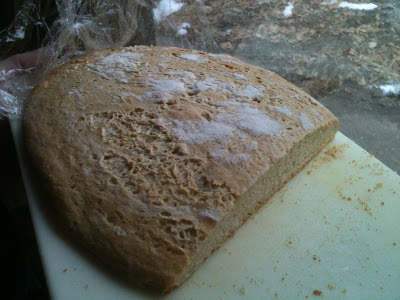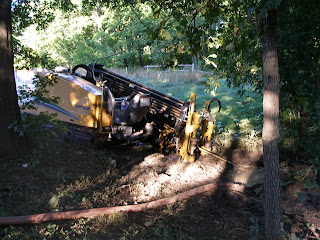Thinking of Ecological Restoration
I am laying out the progression for ecological restoration of a “denatured” site.
Many components in trophic layers to rebuild plus time, space, and succession to consider
You cannot restore a hydro-logical cycle until you have restored the ecological cycle and biological cycle, which needs the abiotic catalysts of soil nutrients, OM, and moisture.
Available Water Capacity is increased through pioneer plants and the slower biotic transpiration replaces abiotic evaporation. Slowed loss of water as vapor or run-off allows for increased infiltration through deeper soils by gravity. The soil is then deepened and fractured by roots and organisms seeking moisture and the nutrients. Drought is buffered with biologically captured soil water.
The progression leads in successions from grasses and forbs to shrubs and eventually trees. Woody material increases the carbon nutrient sink supporting mycelium and fungi.
Daytime transpiration assists night humidity. In the morning as the warming moist air condenses on the cooler leaves, the hydrological micro-cycle is initiated within the forest.
Eventually, once the carrying capacity is stabilized, animals appear or can be introduced. Livestock of some kind is required in all ecological systems. These animals consume the excess biomass and return it to the soil. Trophic levels are now complete with primary producers fed by the bacteria metabolized excrement of mega-fauna.
Within years the trees comb out precipitation from the humid winds. Soil is cooled and rampant with organisms of all sizes. Burrowing rodents turn the soil as birds spread seed across the land. Continuous accumulation of organic material from primary producers increases biomass and biodiversity assuring the resilience of the site.
At first would seem that this can only happen beyond a life time. Hundreds and thousands of years of rock decomposing into soil from the acid of rain. Temperature changes causing the rock to fracture and break into pieces. Lichen's and moss beginning to grow within those spaces. Sending a time frame beyond that of human observation.
Many components in trophic layers to rebuild plus time, space, and succession to consider
You cannot restore a hydro-logical cycle until you have restored the ecological cycle and biological cycle, which needs the abiotic catalysts of soil nutrients, OM, and moisture.
Available Water Capacity is increased through pioneer plants and the slower biotic transpiration replaces abiotic evaporation. Slowed loss of water as vapor or run-off allows for increased infiltration through deeper soils by gravity. The soil is then deepened and fractured by roots and organisms seeking moisture and the nutrients. Drought is buffered with biologically captured soil water.
The progression leads in successions from grasses and forbs to shrubs and eventually trees. Woody material increases the carbon nutrient sink supporting mycelium and fungi.
Daytime transpiration assists night humidity. In the morning as the warming moist air condenses on the cooler leaves, the hydrological micro-cycle is initiated within the forest.
Eventually, once the carrying capacity is stabilized, animals appear or can be introduced. Livestock of some kind is required in all ecological systems. These animals consume the excess biomass and return it to the soil. Trophic levels are now complete with primary producers fed by the bacteria metabolized excrement of mega-fauna.
Within years the trees comb out precipitation from the humid winds. Soil is cooled and rampant with organisms of all sizes. Burrowing rodents turn the soil as birds spread seed across the land. Continuous accumulation of organic material from primary producers increases biomass and biodiversity assuring the resilience of the site.
At first would seem that this can only happen beyond a life time. Hundreds and thousands of years of rock decomposing into soil from the acid of rain. Temperature changes causing the rock to fracture and break into pieces. Lichen's and moss beginning to grow within those spaces. Sending a time frame beyond that of human observation.


Comments